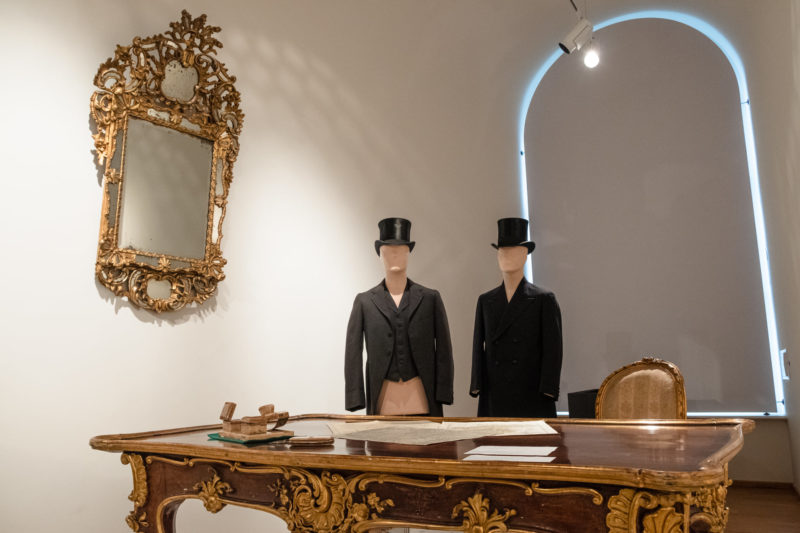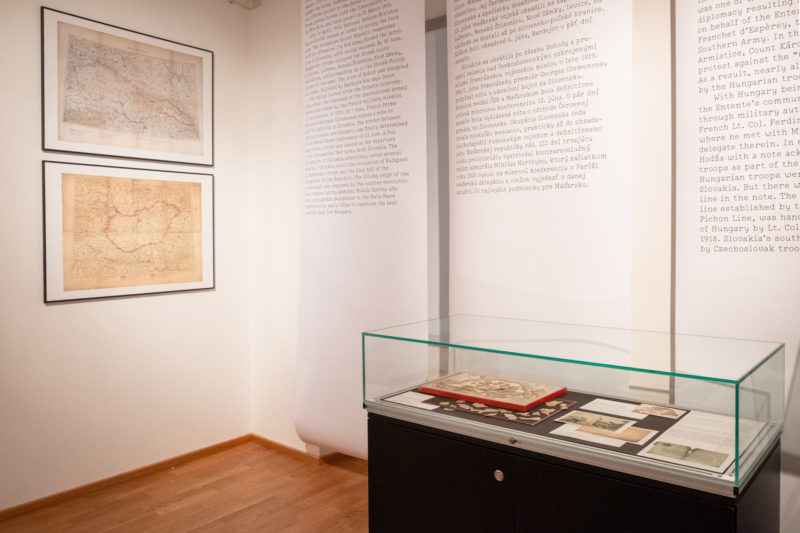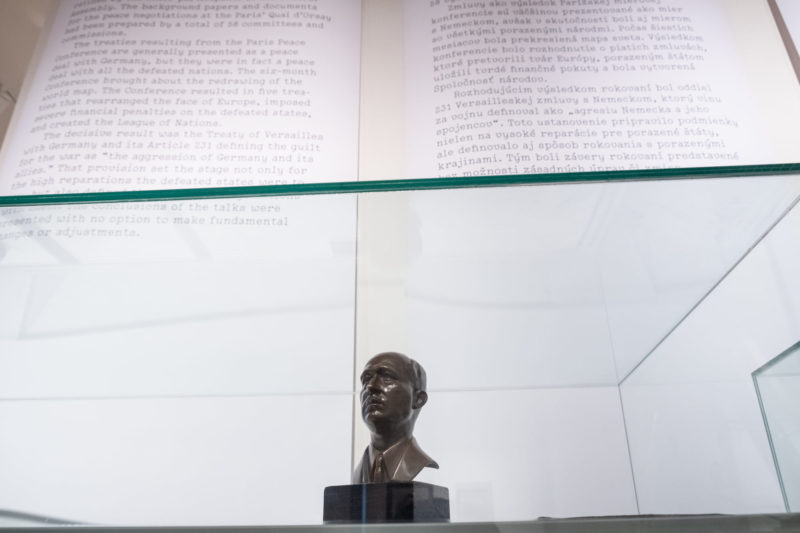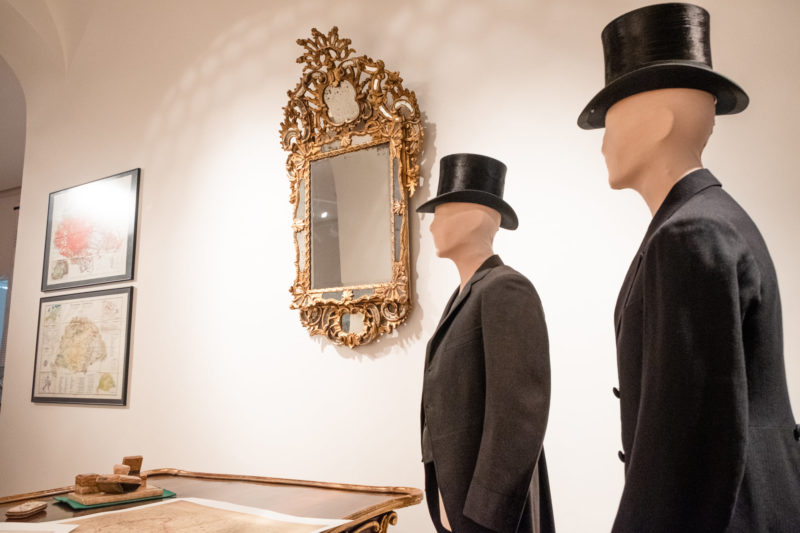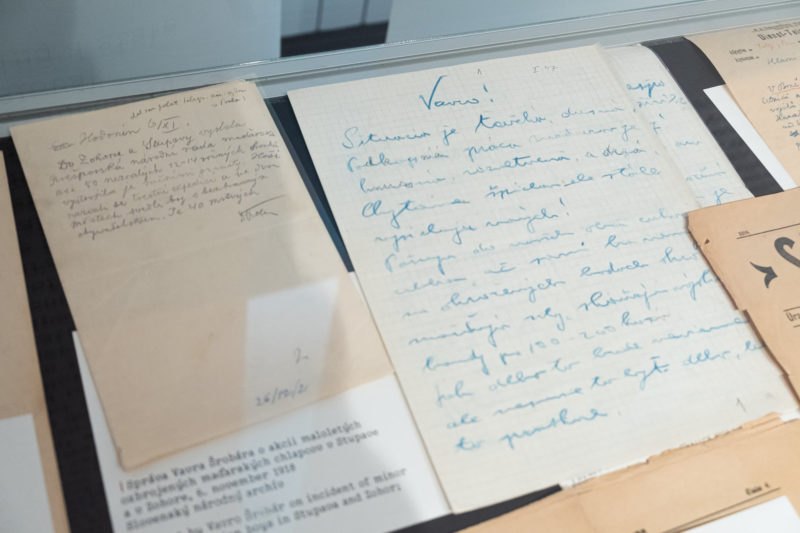Trianon – The birth of a new frontier
In 2020, 100 years have passed since the signing of the Treaty of Trianon, which fundamentally changed the political and ethnic map of Central Europe
Its adoption is still a controversial and often traumatic topic for the heirs of the Paris Peace Conference and the Treaty of Versailles, of which the Treaty of Trianon was a part.
After the end of the First World War, the victorious powers, like with other defeated states, were preparing to sign a peace treaty with Hungary as one of the heirs of the former Kingdom of Hungary. Its aim was to take into account the new power situation in Europe and for young Czechoslovakia this treaty ended the complicated process of creating a new state.
The treaty signed in June 1920 at the Grand Trianon palace in Versailles dealt mainly with two fundamental issues of state borders and national minorities. The key role during the preparation of the treaty was played by the Secretary General of the Czech-Slovak delegation, Štefan Osuský, an important Slovak lawyer, diplomat, politician and educator.

The almost two-year-long exhibition about Trianon was conceived not only as a commemoration of this anniversary, but mainly as a contribution to documenting the complex process of the dissolution of historical Hungary, to the integration of Slovakia into the new Czechoslovak state and to the question of forming a new state identity.
The exhibition also includes the issue of personalities of precoup Slovak political and cultural life, who did not identify with the idea of the Czechoslovak state and perceived it as a denial of the historical right of the Saint Stephen’s Crown. On the other hand, through photographs, postcards, leaflets, archival sources and three-dimensional objects, the exhibition also presents the situation of Hungarians, who, thanks to the Trianon, mostly involuntarily found themselves in a state whose legitimacy many of them rejected.
The opening part of the exhibition introduces the events connected with the demise of the century-old Habsburg monarchy and the establishment of a common state of Czechs and Slovaks at the end of October 1918. On the basis of accompanying texts and rich pictorial, numismatic and archival material, the following part describes visitors a process of gradual administrative but also economic integration of liberated parts of the territory of Slovakia under the authority of the Czechoslovak state, in particular through the Czechoslovak Provisional Government in Slovakia with its seat in Skalice and the Office of the Minister with power of attorney for the administration of Slovakia with its seat in Žilina, then from February 1919 in Bratislava.
The very act of declaring the Czechoslovak Republic from a practical point of view did not yet guarantee its existence. In addition to taking over the state administration, it was also necessary to take over the territory of Slovakia, which in mid-November 1918 was almost entirely occupied by the Hungarian army. The core of the exhibition is a circuit dedicated to military operations and diplomatic struggle for the southern border between Czechoslovakia and Hungary against the background of the ongoing peace conference in Paris. The complicated birth of a new border is brought closer by the presentation of rare cartographic material from the funds of the Slovak National Archives, with which the Czechoslovak delegation worked at Paris Peace Conference.
Against the background of a scenic installation imitating the interior of the Grand Trianon palace in Versailles, the theme of peace negotiations of the victorious powers of the World War I, which permanently reshaped the political map of Europe until then, unfolds. The Czechoslovak delegation participated in the peace negotiations in Paris from January 1919. The signing of peace treaties with Austria, Germany and Hungary was to define the borders of the new state, which was to include Slovakia and Carpathian Ruthenia.
The border between Czechoslovakia and Hungary was finally established at a peace conference on June 12, 1919. After several diplomatic delays and negotiations, the Hungarian government decided in May 1920 to sign the treaty, which occurred on June 4, 1920.
The fifth thematic area of the exhibition deals with the issue of the pro-Hungarian irredence and resistance to the integration of Slovakia into the Czechoslovak Republic. Although the majority of the Slovak population accepted the establishment of Czechoslovakia, not all representatives of the Slovak national movement agreed with the idea of Slovakia joining the Czech lands.
Centrifugal tendencies towards the Czechoslovak Republic were manifested mainly in the activities of pro-Hungarian politicians in eastern Slovakia, which was ethnically the most diverse and where the influence of the Slovak national movement was the weakest. This ideologically precisely built final part of the exhibition also delves into the difficult issue of the continuity of historical memory, its transformation in the conditions of building the ideology of the new state.
In practice, this was manifested by renaming public spaces, publishing new history textbooks or looking for references to alleged Czech-Slovak traditions, in particular by reviving the reverence for Saints Cyril and Methodius, as well as strengthening the reverence for Saint Wenceslas in Slovakia, which was to eliminate deep-rooted reverence for Saint Stephen the King in Slovakia. The symbolic ending of the Hungarian heritage was to be the removal of millennial monuments in Devín and Nitra on Zobor, as well as the statue of Queen Maria Theresa in Bratislava, which is also documented by authentic period photographs. Through a rich selection of contemporary press and literature, the exhibition concludes with a look at the reflection of the 10th anniversary of the founding of the First Republic, or the signing of the Treaty of Trianon.
The Treaty of Trianon marked a definitive end to the period of the Danubian monarchy and steered Slovakia into a new stage in its history. The exhibition on the 100th anniversary of this important historical event can be visited on the second floor of Bratislava Castle until May 1, 2023.
